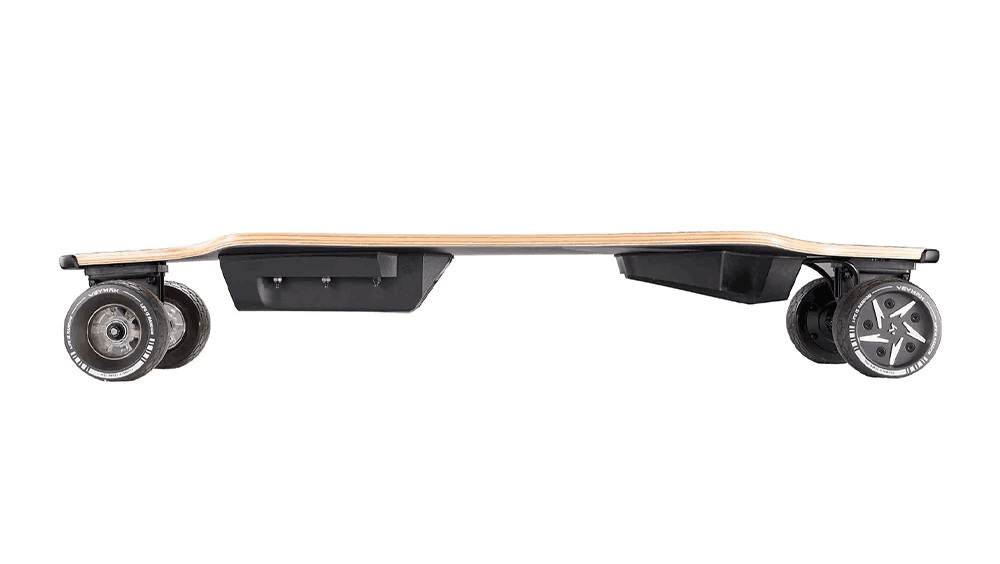Electric Skateboard Core Technology and Cost-Effective Chip Selection Strategy
With increasing urban congestion and growing environmental awareness, electric skateboards are emerging as a new generation of portable, intelligent transportation tools, rapidly gaining popularity.
An electric skateboard integrates motor drive, battery power, and electronic control systems into a traditional skateboard, operated via wireless remote or mobile app for fully electric propulsion without manual skating. Compared to electric bicycles or scooters, electric skateboards are lighter, more portable, and flexible, ideal for short commutes, daily entertainment, campus navigation, and more.

01 Market Overview
The electric skateboard market has grown rapidly, driven by young consumers, urban commuters, and environmental consciousness. According to 2024 data, the global market is expected to grow at a CAGR of 7-10%, potentially reaching tens of billions of dollars by 2030.
North America leads, with strong demand in areas like California due to skateboard culture. Europe (e.g., Germany, France) sees rapid growth in urban areas but faces regulatory constraints. Asia-Pacific, leveraging production advantages (e.g., Shenzhen supply chain), is a manufacturing hub, with notable growth in Japan and Australia.

02 Recommended Chips
Electric skateboard wireless control systems require efficient, low-power, and stable RF communication for remote operation, data transmission, or intelligent control. Below are recommended solutions using SI24R1, CB2401, and AT2401C chips, with their technical features and advantages.
The SI24R1 is a 2.4GHz ISM band wireless transceiver chip, known for low power and cost-effectiveness, widely used in IoT and remote devices. CB2401 and AT2401C are RF front-end (FEM) chips that enhance transmit power and receive sensitivity, ideal for extending remote control range and anti-interference in electric skateboards. The recommended solution pairs SI24R1 as the core transceiver with CB2401 or AT2401C as the RF front-end for a stable, long-range, low-power system.
Paired with DRV8305 motor driver: Three-phase brushless drive, integrated current sensing, supports 50V/5A.
Paired with BQ76952 power management chip: Supports 3-16 series batteries with high-precision monitoring.
Paired with BMI270 attitude detection sensor: Low-power 6-axis IMU.
SI24R1 + CB2401: Ideal for budget-limited, cost-effective projects like urban commuting skateboards requiring stable control and moderate range.
SI24R1 + AT2401C: Suited for high-end skateboards needing longer range and anti-interference (e.g., off-road). AT2401C supports Zigbee, offers strong ESD protection, suits complex environments, and requires minimal peripheral components.
03 Future Trends
Electric skateboard development will be driven by technological innovation, design optimization, environmental considerations, and market dynamics. Solid-state batteries or fast-charging will extend range beyond 50 km and reduce charging times. Lightweight materials like carbon fiber and magnesium alloys will reduce weight to 5-8 kg, enhancing portability. Modular designs will enable quick battery and motor swaps, extending lifespan. Intelligent features like AI path planning, automatic braking, and app-based speed/battery monitoring will become standard. All-terrain and urban models will diverge to meet varied needs. Sustainability will emphasize recyclable materials (e.g., bamboo decks, degradable tires) and low-carbon production.
In summary, the SI24R1 paired with CB2401 or AT2401C offers a low-power, high-performance, cost-effective wireless control solution for electric skateboards. From urban commuting to off-road applications, this solution delivers excellent performance through optimized RF design and flexible development. As the market grows, this chip combination will drive innovation, ensuring safer, smarter, and more efficient skating experiences.




.png)

.png)












